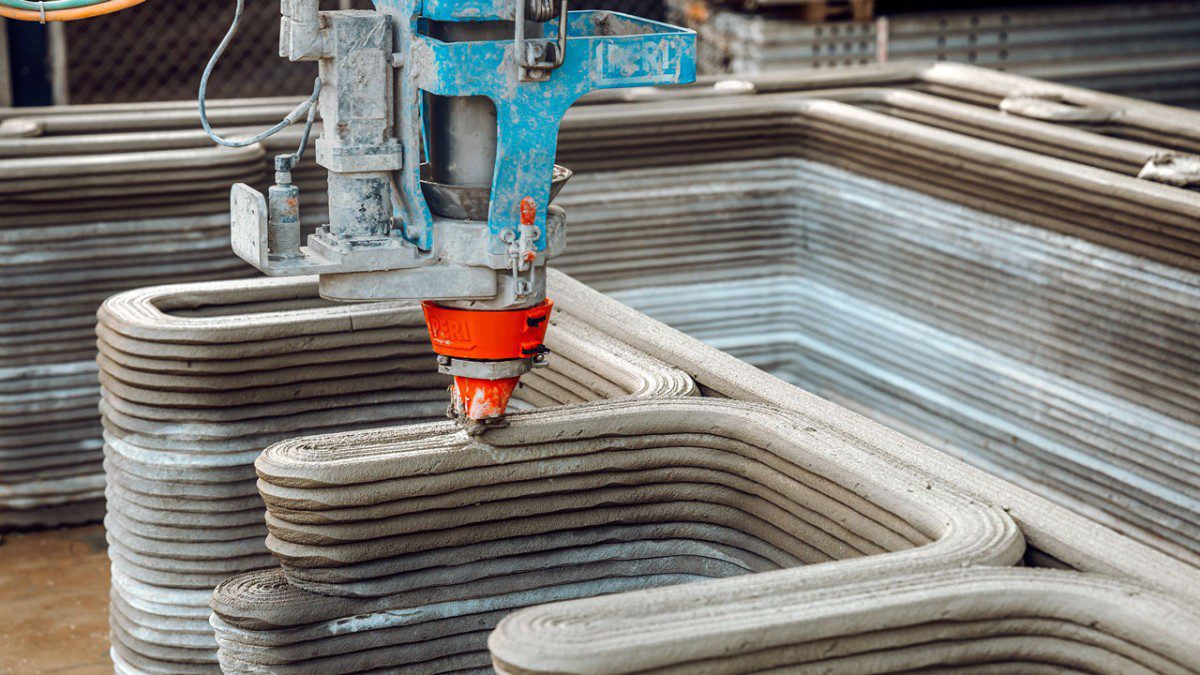Oman has achieved a significant milestone in its construction sector with the completion of the largest 3D real concrete printed building. This breakthrough showcases the potential of 3D printing in revolutionizing how buildings are designed and constructed. Let’s dive into the details of this groundbreaking project and its implications for the future of construction in Oman and beyond.
Table of Contents
The Building: Size, Purpose, and Location
The 3D-printed building is located in Oman, symbolizing the country’s innovative approach to adopting cutting-edge technologies. The structure spans several thousand square meters, making it the largest of its kind in Oman and one of the largest globally. The building was constructed using advanced 3D printing technology, which employed real concrete instead of traditional building materials like steel or wood.
Designed to serve as a multi-functional facility, the structure demonstrates the versatility of 3D-printed buildings. Whether used as commercial office space, a residential complex, or an industrial hub, the structure’s design adapts to multiple functions, emphasizing the flexibility of the 3D printing process.
Understanding the Technology Behind 3D Concrete Printing
At the heart of this project lies the innovative use of 3D concrete printing technology. Unlike traditional construction methods that involve labor-intensive processes, 3D printing allows for a fully automated, layer-by-layer construction of the building, minimizing human intervention. The printer uses a specialized nozzle to extrude layers of concrete, which are built upon one another to form walls, floors, and even intricate design elements.
This process brings several advantages:
- Efficiency: 3D printing significantly reduces construction time. What would normally take months or years to build using traditional methods can be completed in a fraction of the time.
- Cost Reduction: Fewer materials are wasted in the process, and labor costs are lower since fewer workers are required. These savings contribute to a more affordable overall construction process.
- Design Flexibility: 3D printing offers unparalleled freedom in design. Complex shapes and structures that would be difficult or impossible to achieve with traditional methods can be created with ease.
The Challenges and Solutions
Despite the many benefits of 3D concrete printing, the project faced its share of challenges. One of the primary concerns was ensuring the structural integrity of the building, given the relatively new nature of the technology. Extensive testing and quality assurance were necessary to ensure that the materials used could withstand the same pressures and environmental factors as traditionally built structures.
Another challenge was logistical in nature—transporting the massive 3D printer to the construction site and ensuring it could operate efficiently in Oman’s climate. Engineers worked to overcome these obstacles by adapting the machinery to local conditions and implementing fail-safe measures to ensure uninterrupted construction.
The Partners and Collaborators
This project was made possible through a collaboration between leading technology firms, construction companies, and the Omani government. International partners brought in expertise in 3D printing, while local contractors handled the on-site logistics and construction. The Omani government played a crucial role in fostering an environment conducive to innovation by supporting the integration of 3D printing technology into the country’s construction sector.
Sustainability and Environmental Impact
One of the standout features of this 3D-printed building is its sustainability. 3D printing as a method reduces waste by precisely controlling the amount of concrete used, unlike traditional methods where excess material is often discarded. Additionally, the construction process requires significantly less energy, contributing to a lower carbon footprint.
Furthermore, the materials used in this project were sourced locally, reducing the environmental impact of transporting construction materials across long distances. The building itself is designed to be energy efficient, featuring state-of-the-art insulation and passive cooling systems to reduce its energy consumption over time.
Impact on Oman’s Construction Industry
The completion of this project marks a turning point for Oman’s construction industry. By embracing 3D printing technology, Oman positions itself at the forefront of the region’s construction innovation. The country can now look forward to future projects where this technology is further integrated into large-scale developments such as housing, commercial complexes, and public infrastructure.
This innovation also opens up opportunities for training local talent in 3D printing technologies, creating jobs and boosting the economy. As more buildings are constructed using 3D printing, costs are expected to decrease, making this method even more attractive for future projects.
Global Perspective on 3D Printing in Construction
Oman is not alone in its quest to adopt 3D printing in construction. Other countries around the world have also been exploring the benefits of this technology. Notable examples include:
- Dubai’s 3D Printed Office of the Future: One of the first 3D printed office spaces in the world, showcasing Dubai’s ambition to lead in smart city development.
- Mexico’s 3D Printed Homes: A project aimed at providing affordable housing through 3D printing technology.
- The United States: Various states are experimenting with 3D printing for housing and infrastructure projects.
Oman’s success with its 3D-printed building solidifies its position as a leader in construction innovation in the Gulf and sets a new benchmark for the region.
Conclusion: The Future of 3D Printing in Oman
The completion of the largest 3D real concrete printed building in Oman is a testament to the country’s forward-thinking approach to construction. By embracing new technologies like 3D printing, Oman is paving the way for more sustainable, cost-efficient, and innovative building practices.
Looking ahead, we can expect to see more projects like this one, not only in Oman but across the Middle East. With governments and private companies investing in 3D printing, the future of construction looks brighter, more efficient, and environmentally friendly. The possibilities are endless, and Oman has set the stage for a new era in construction.




